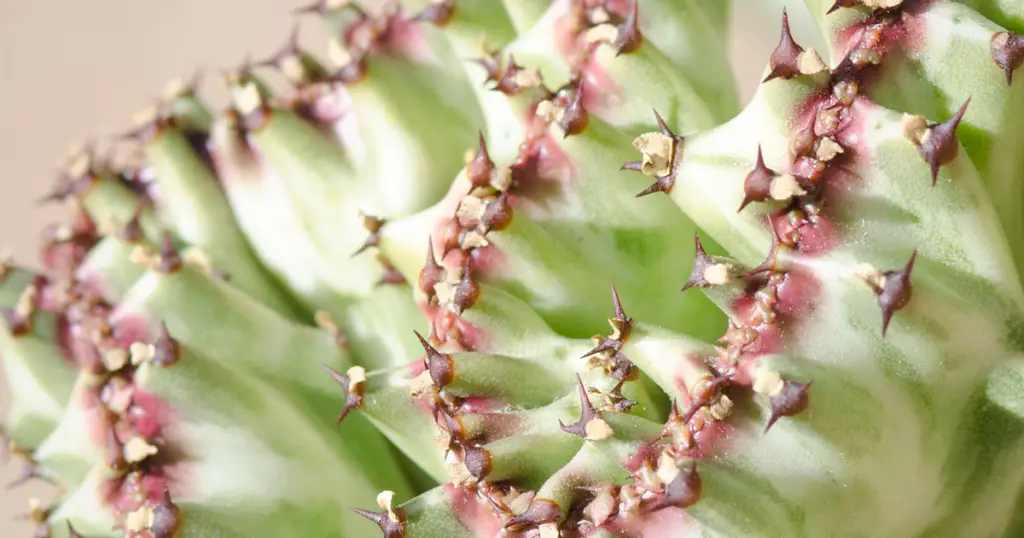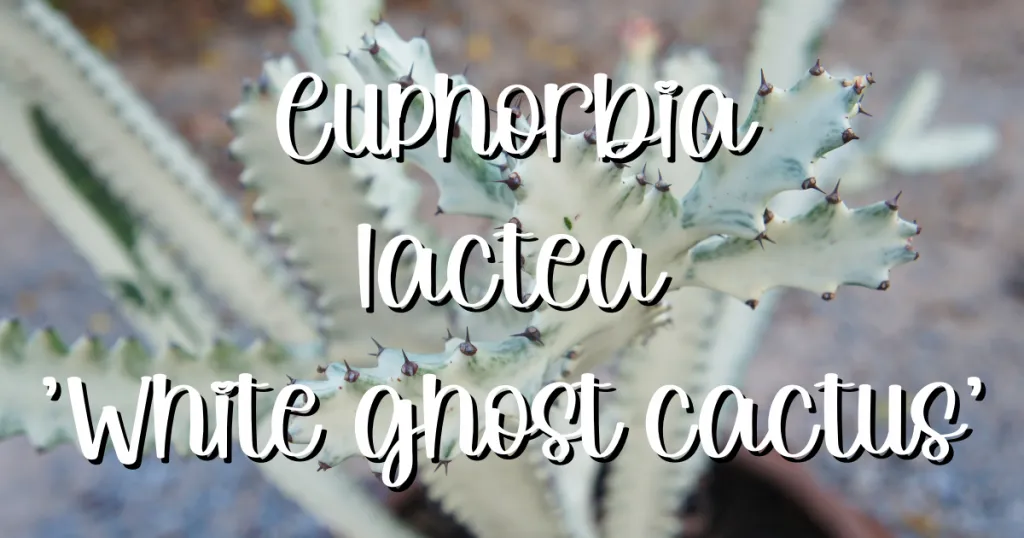Euphorbia lactea ‘White Ghost Cactus’ is a captivating plant known for its ethereal blend of colors – creamy white, pink, green, and yellow. A member of the Euphorbiaceae family, it stands out with its triangular stems adorned with spikes, creating a candelabra-like silhouette. This unique plant, which can reach over 6 feet in maturity, originally hails from tropical regions, making it adaptable to humid conditions.
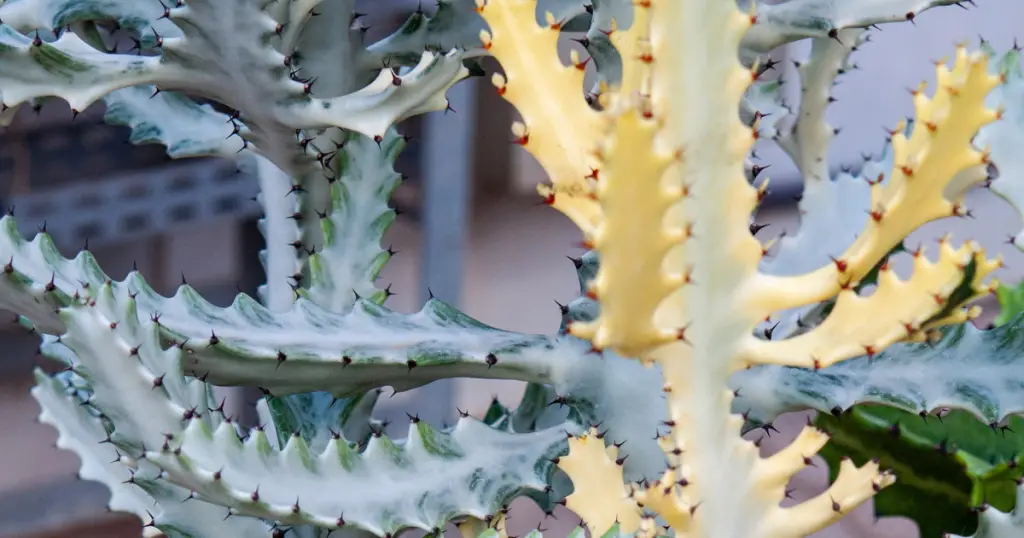
Dig in!

Appearance
Euphorbia lactea ‘White Ghost Cactus’ boasts tall, triangular stems adorned with sharp spikes. Its overall coloration is a mesmerizing mix of creamy white, delicate pink, and subtle swirls of green and yellow. The growth rate of this plant varies according to factors like soil type, sunlight exposure, temperature, and more.
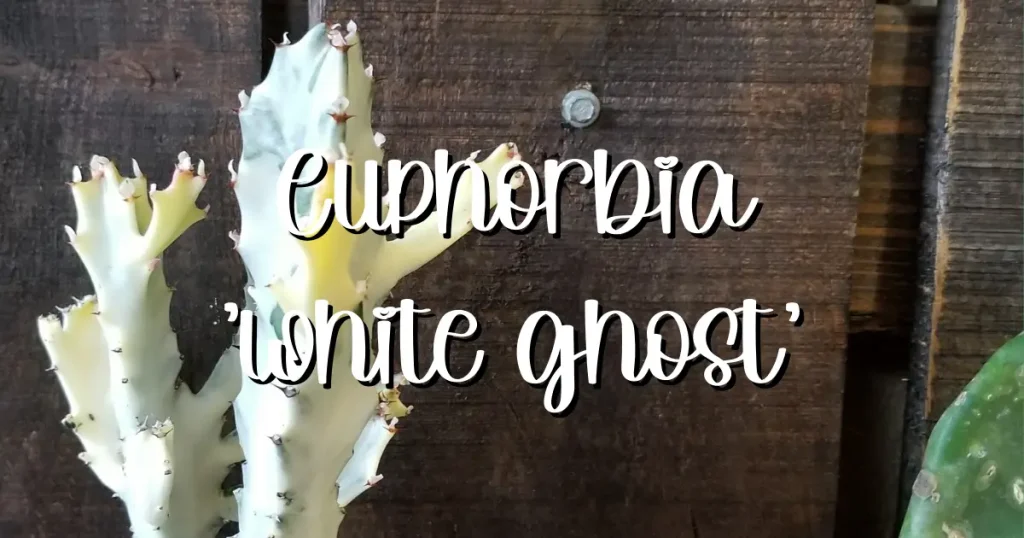
Caring for Euphorbia lactea ‘White Ghost Cactus’
Caring for this captivating cactus (which really isn’t a cactus, but that’s what we’re calling it for today) is not as daunting as it may seem. Here are some essential care considerations:
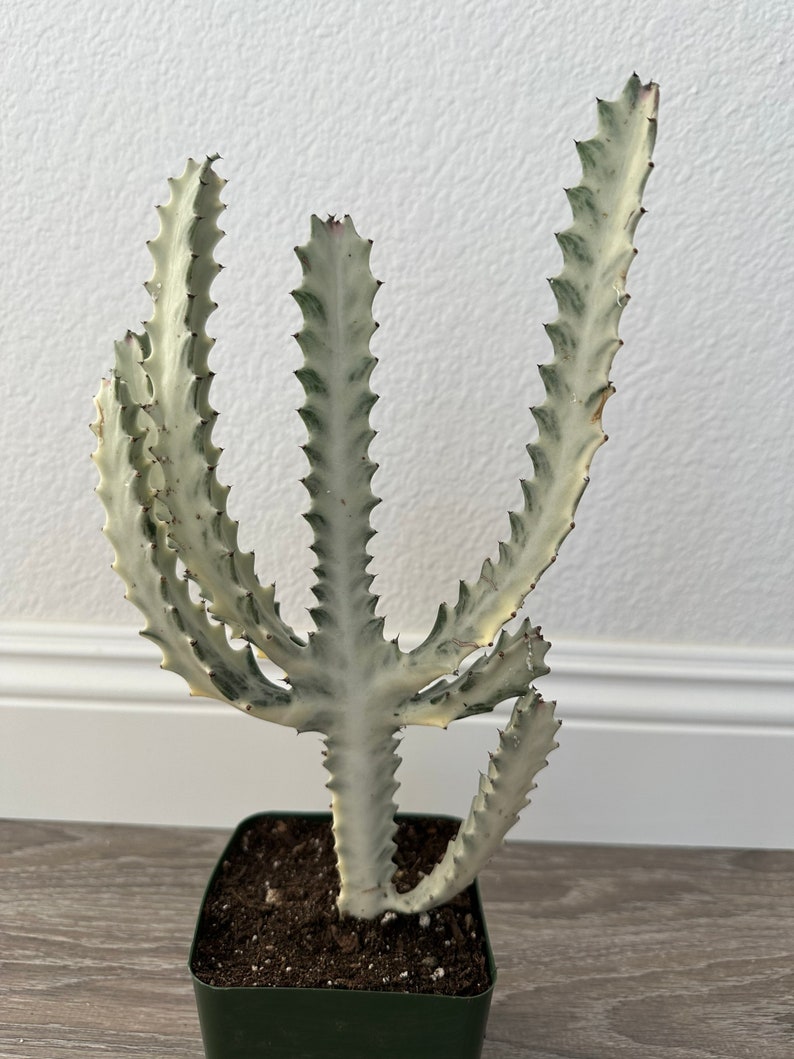
Source: Etsy
1. Watering
- Allow the soil to dry between waterings.
- Adjust the frequency and amount of water based on factors like soil type, sunlight, and temperature.
- Remember, overwatering can harm your Euphorbia lactea ‘White Ghost Cactus’, so moderation is key.
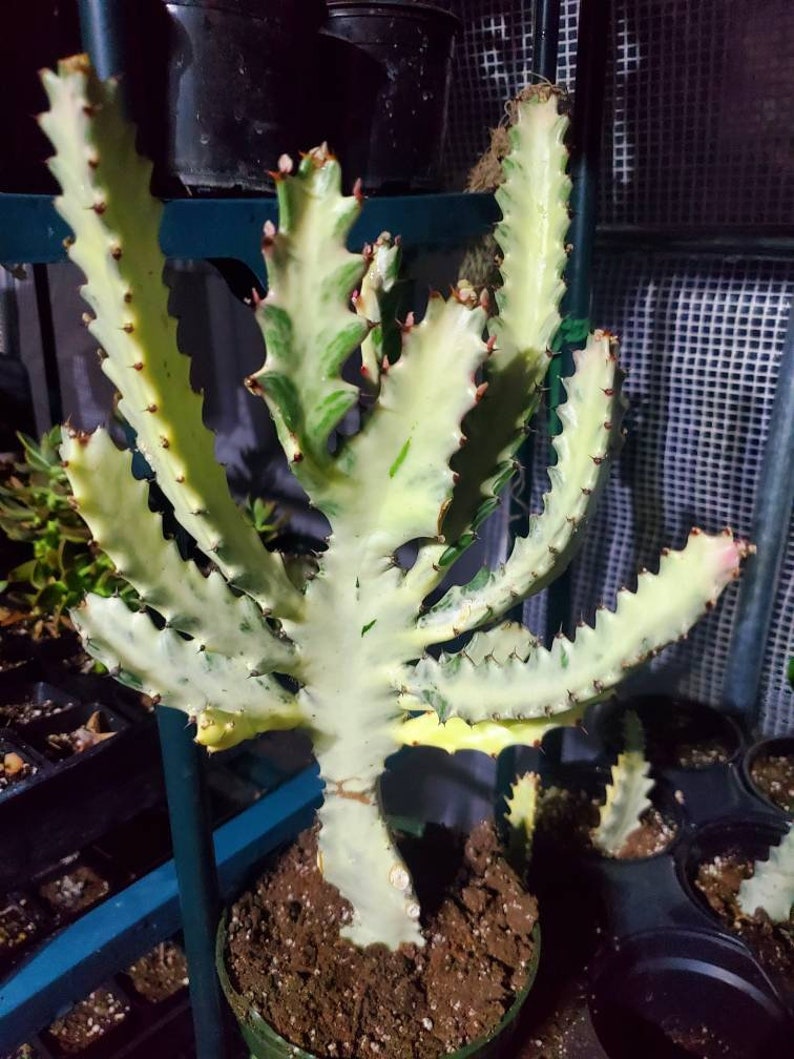
Source: Etsy
2. Fertilization
- Generally, succulents, including Euphorbia lactea ‘White Ghost Cactus’, thrive in nutrient-poor soils and may not require frequent fertilization.
- If you decide to fertilize, ensure you are using the appropriate succulent fertilizer.
- Familiarize yourself with the nuances of succulent fertilization for optimal results.

Succulent fertilizer available to purchase on Etsy.
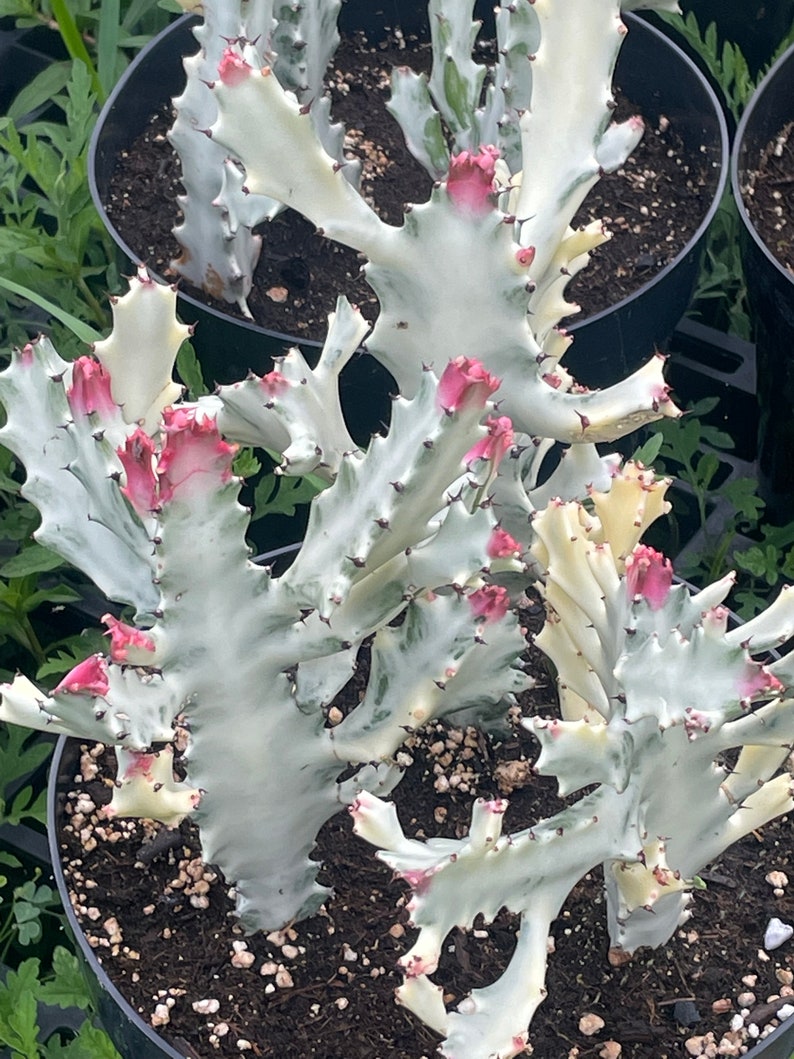
Source: Etsy
3. Pruning Euphorbia lactea ‘White Ghost Cactus’
- Pruning is essential to maintain the plant’s shape and remove any dead or yellowing leaves.
- Typically, extensive pruning is not necessary unless a branch dies or shows signs of rot.
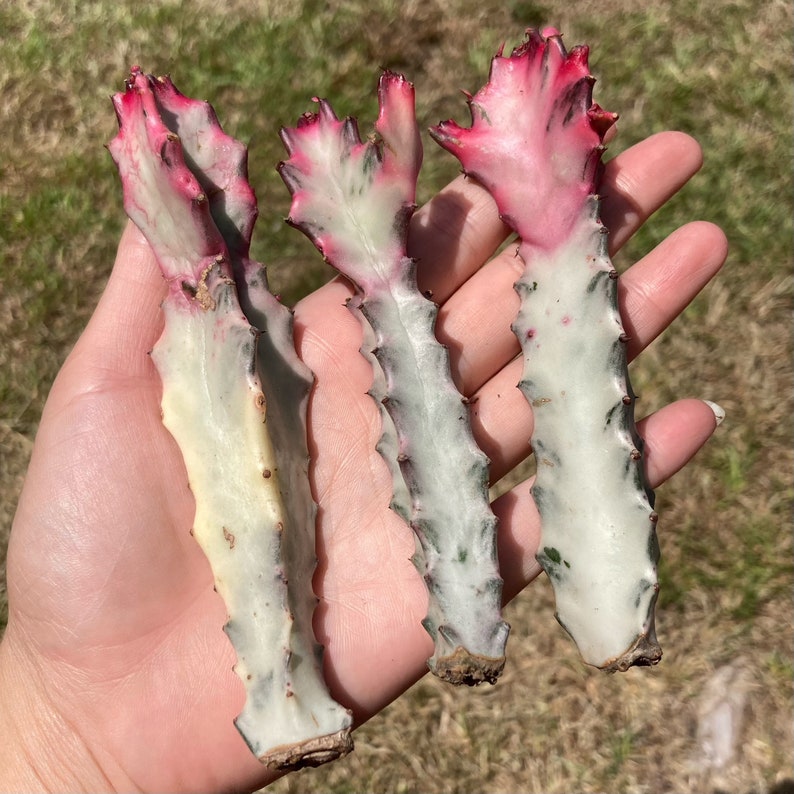
Source: Etsy
4. Repotting
- Repot your Euphorbia lactea ‘White Ghost Cactus’ when it becomes root-bound, which can slow its growth.
- Opt for a larger pot to accommodate its expanding root system.
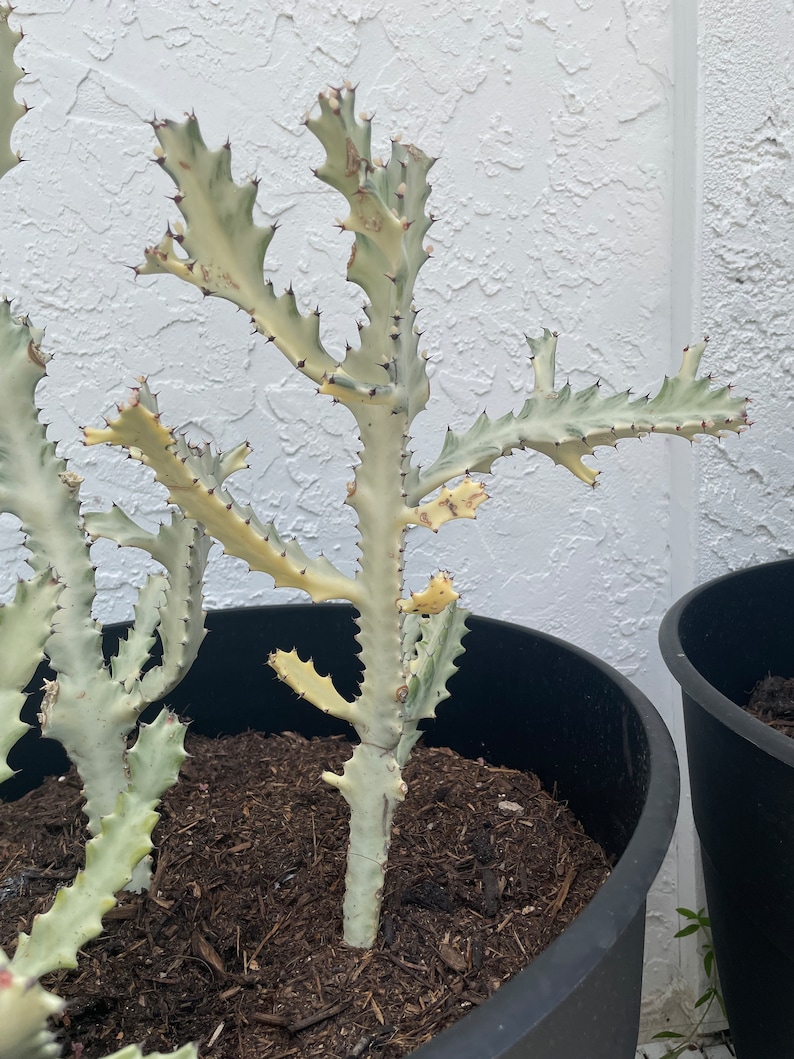
Source: Etsy
Handling Euphorbia lactea ‘White Ghost Cactus’ Safely
When interacting with Euphorbia lactea ‘White Ghost Cactus’, it’s crucial to take safety precautions into account:
***Are Succulents Poisonous? 5 SIMPLE Steps You Need to Know About Preventing Accidental Poisonings
– Milky Sap
- The plant’s milky sap resembles that of poinsettias and fig trees and can be a potent irritant.
- Always wear gloves when handling the plant, and promptly wash off any sap that comes into contact with your skin.
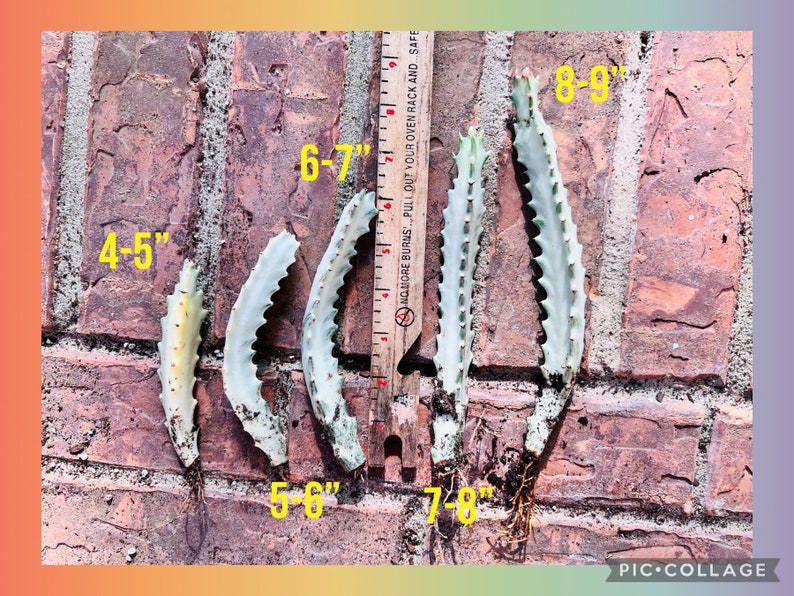
Source: Etsy
– Children and Pets
- Keep this plant out of reach of children and pets, as is advisable with most houseplants.
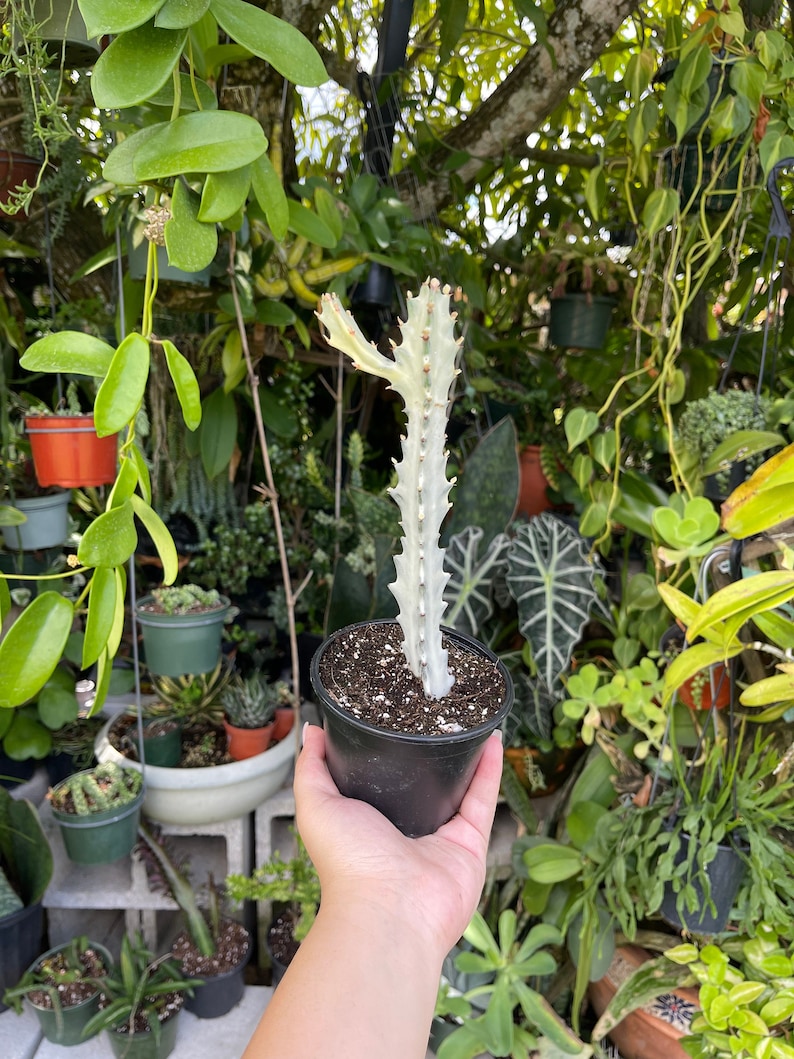
Source: Etsy
Ideal Conditions for Growing Euphorbia lactea ‘White Ghost Cactus’ in Containers
Whether you plan to keep it indoors or on your patio, here are key considerations for container gardening:
– Room for Growth
- Provide adequate space for your Euphorbia lactea ‘White Ghost Cactus’ to flourish.
- A container with a diameter of 8-12 inches and a depth of 10 inches is a good starting point.
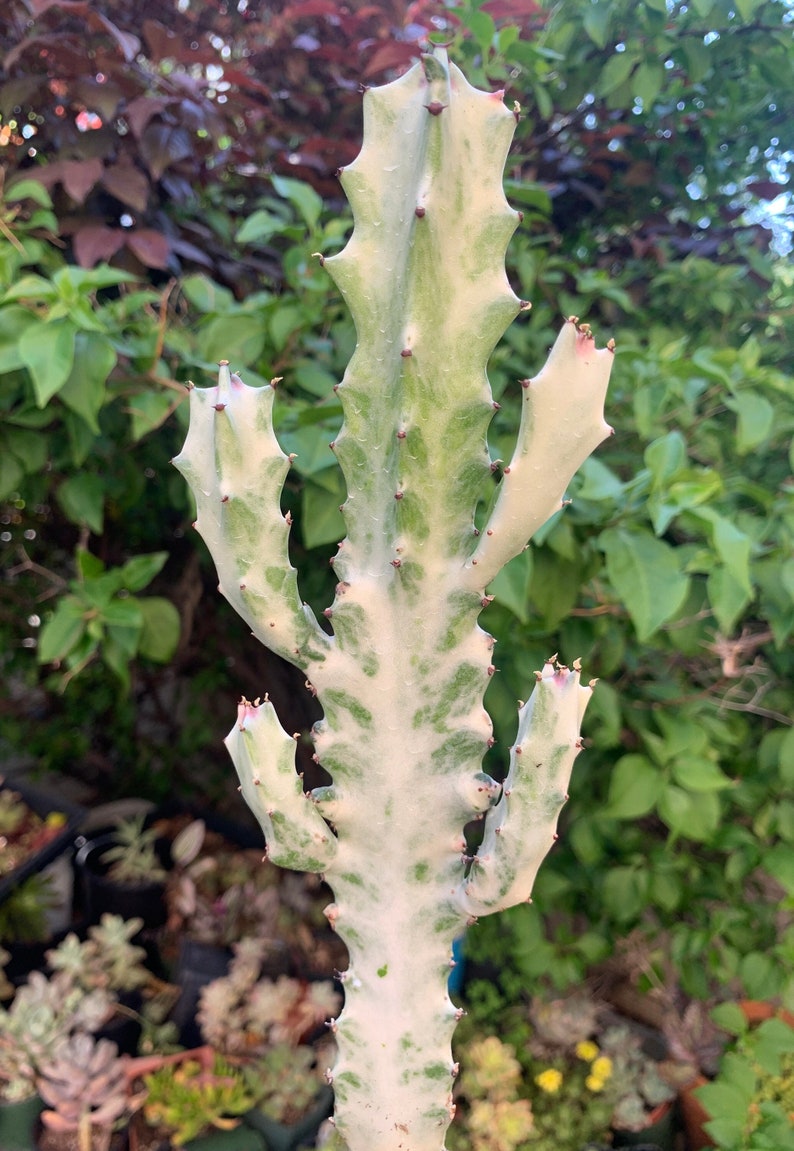
Source: Etsy
– Indoor vs. Outdoor
- You can grow Euphorbia lactea ‘White Ghost Cactus’ both indoors and on the patio.
- If placed outdoors, protect it from harsh midday sun, which can lead to sunburn and scorching.
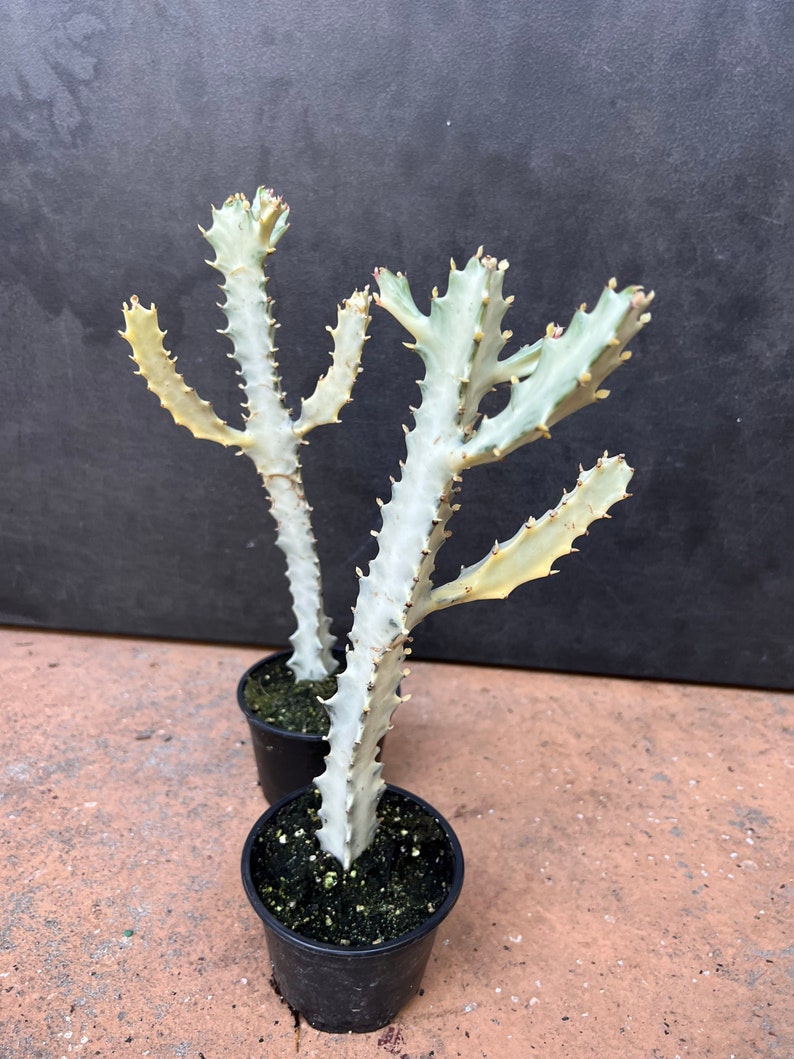
Source: Etsy
Optimal Growing Zones and Sunlight Requirements
Euphorbia lactea ‘White Ghost Cactus’ thrives under specific conditions:
– Outdoor Growing Zones
- This plant thrives in outdoor zones 9b-11.
- Adequate sunlight is essential, although the required amount varies depending on location due to its low chlorophyll content.
- In colder regions, consider bringing it indoors or providing winter protection.
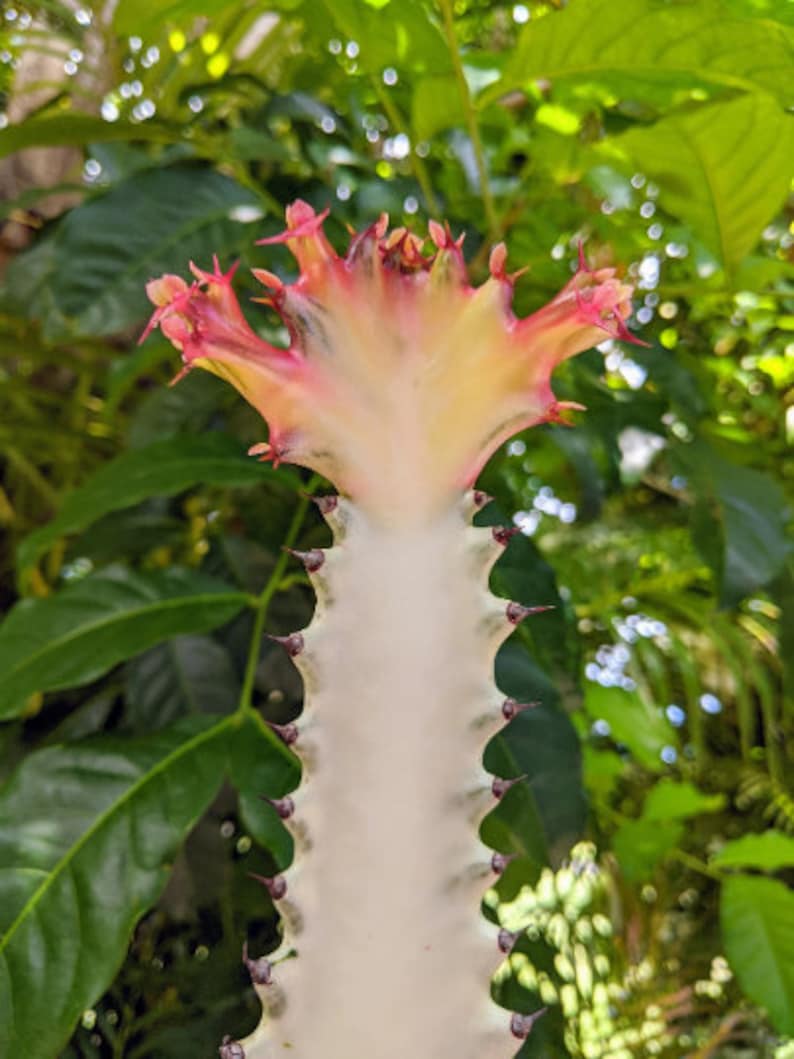
Source: Etsy
Flowering Habits of Euphorbia lactea ‘White Ghost Cactus’
In spring and summer, Euphorbia lactea ‘White Ghost Cactus’ produces petite white or yellow flowers. However, potted plants and those grown indoors tend to flower less frequently.
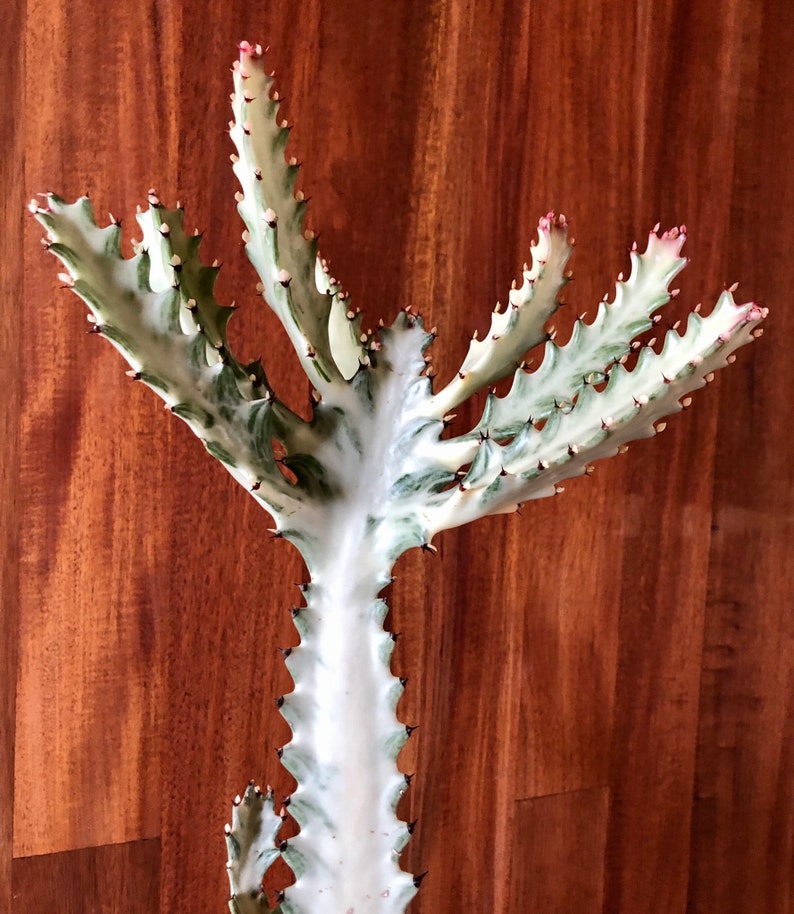
Source: Etsy
Propagating Euphorbia lactea ‘White Ghost Cactus’
Surprisingly, despite its lack of traditional leaves, Euphorbia lactea, also known as the White Ghost Cactus, can be propagated through stem cuttings. Here’s how:
Choose a Healthy Stem
- Select a stem that is at least 6 inches long and not overly woody.
Cut the Stem
- Use sharp, clean scissors or pruning shears to make a clean cut just below a node (where the stem branches off).
- You may notice white, milky sap oozing from the cut; avoid contact with it as it is poisonous.
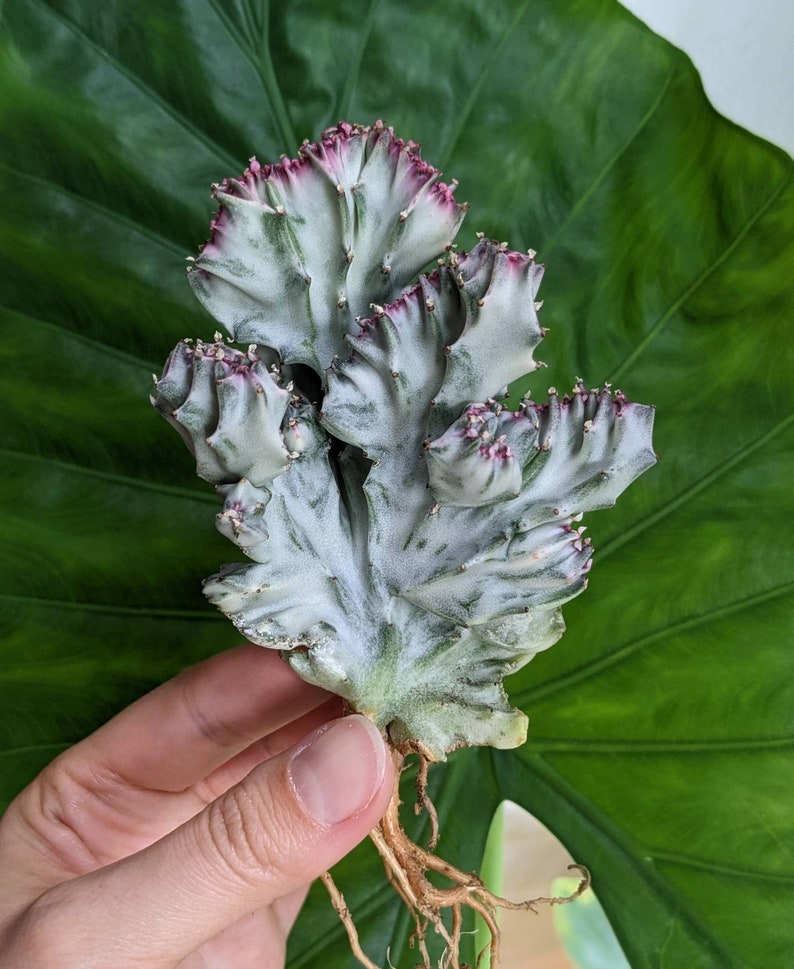
Source: Etsy
Allow Callusing
- Place the cutting in a warm, dry area and let the cut end callus for a day or two.
Plant the Cutting
- Fill a small pot with well-draining potting soil and create a hole in the center.
- Insert the cutting into the hole and gently pack the soil around it.
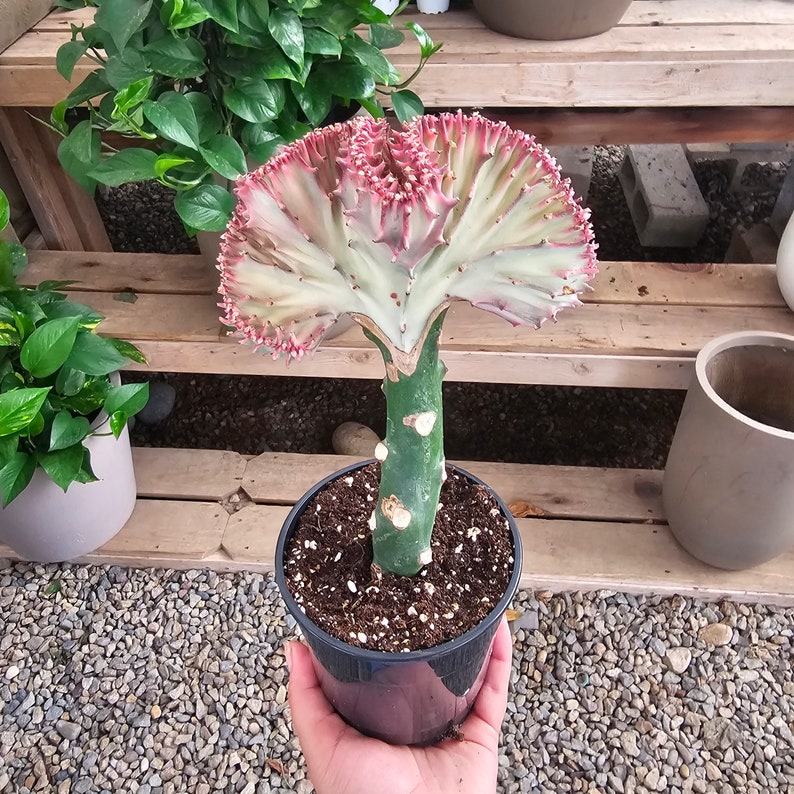
Source: Etsy
Safety Precautions
- Remember that Euphorbias produce a milky sap that can irritate the skin and eyes. Always wear gloves when handling cuttings and wash off any sap promptly if it comes into contact with your skin.
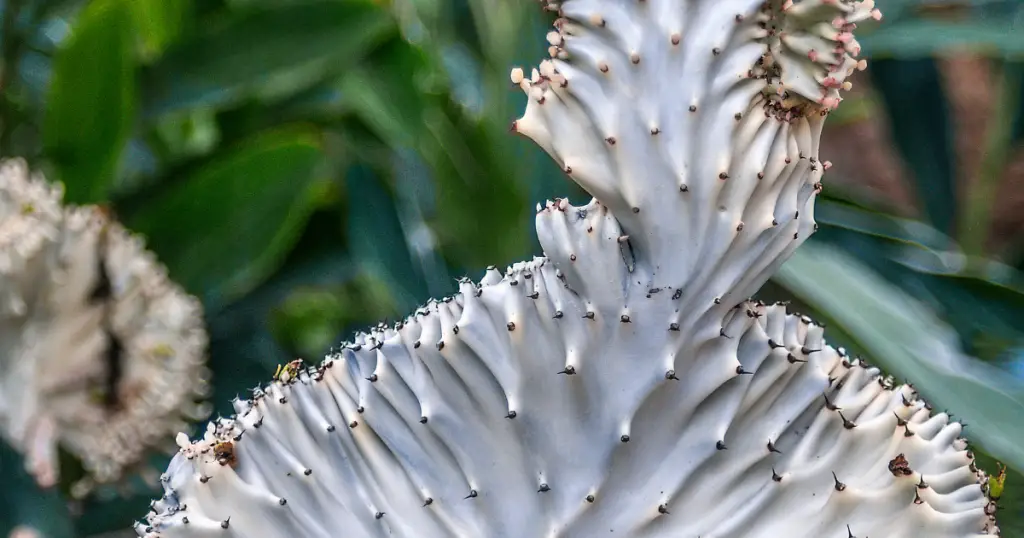
Bonus: Cresting New Heights with Euphorbia Lactea Cristata ‘Coral Cactus’
Grafting is a horticultural technique that combines two plants to create a single entity. In this case, the scion contributes unique features, while the rootstock provides essential nutrients and water-absorbing abilities. The result is a plant with the best of both worlds.
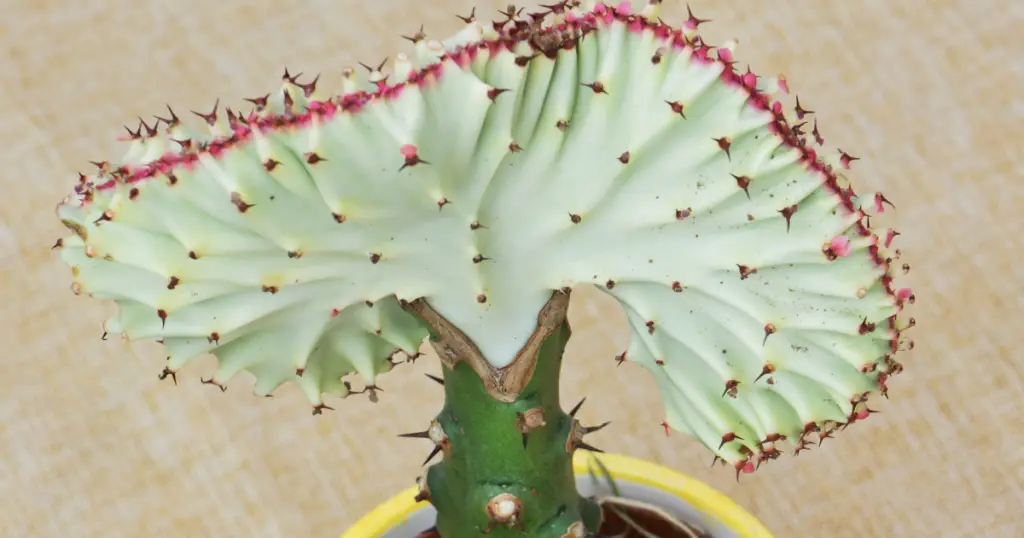
Euphorbia lactea cristata, also known as the ‘Coral Cactus,’ is a visually stunning cultivar of the ‘White Ghost Cactus.’ This captivating variety is achieved through a grafting process, merging the top part of Euphorbia lactea (the scion) with the bottom part of another plant (the rootstock), specifically Euphorbia neriifolia.
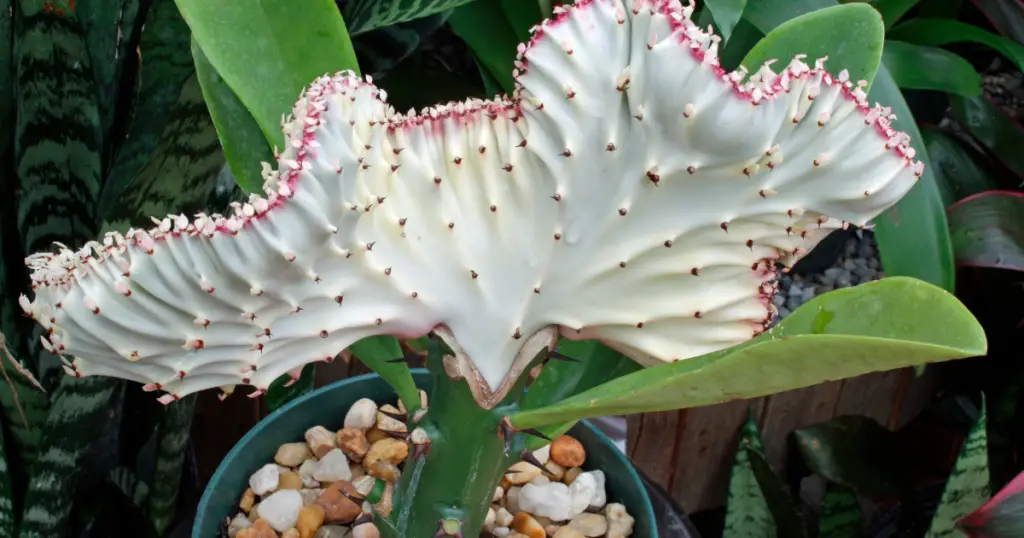
Euphorbia lactea cristata ‘Coral Cactus’ benefits from enhanced stability and adaptability, thanks to the rootstock. Meanwhile, the scion grants it the captivating coral-like crest. Keep in mind that crested succulents may have unique care requirements, so be sure to research and care for them accordingly.
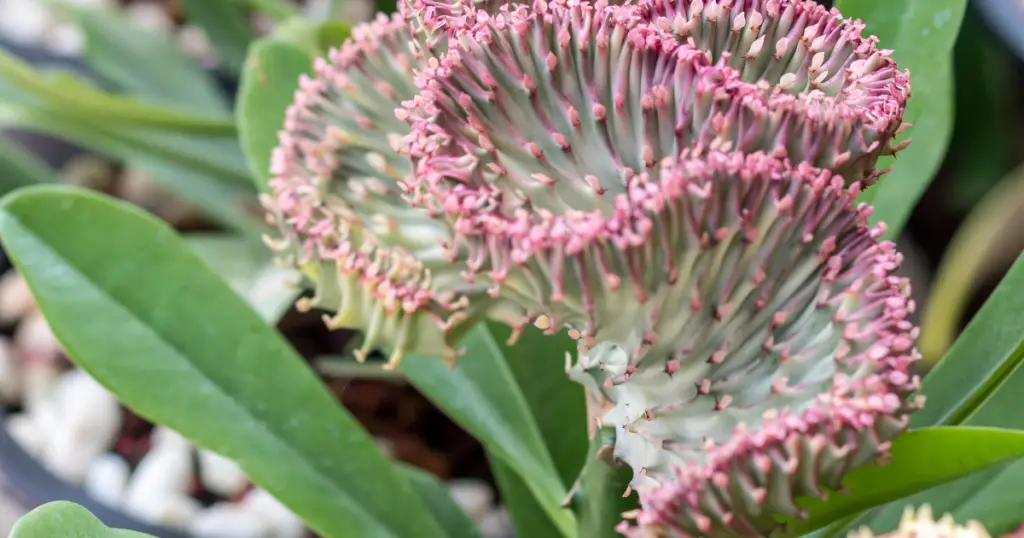
Euphorbia lactea ‘White Ghost Cactus’ is a visually striking houseplant with unique characteristics and straightforward care requirements. Its adaptability to humid conditions and preference for partial shade make it an excellent choice for both seasoned gardeners and plant enthusiasts. If you’re intrigued by its crested variant, known as the ‘Coral Cactus,’ keep reading below!
